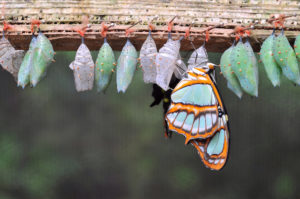
”No man is free who is not master of himself.”
~Epictetus
A flower begins with a seed sprouting from the earth with the seed leaves coming out of the ground first. The plant grows a stalk and sends out more leaves. On the stalk or branches of the plant, small buds form and are protected by the calyx of the flower. One day when the bud is large enough, the days are warm enough and there is the right amount of sunlight and rain, the calyx begins to open, and the flower appears.
The petals of the flower begin to unfold from the calyx. The pistil and the stamen become visible. Bees and birds visit the flower and spread the sticky yellow pollen from the stamen from flower to flower, fertilizing the plants. After fertilization, at the base of the pistil, the ovary begins to swell to produce the fruit, in which seeds for new plants are embedded.
A plant grows, a flower blooms and fruit ripens, all in an observable and predictable sequence for each species of plant. Weather, water, time and location are some of the factors that influence the growth and maturity rate of a plant.
Humans are more complex than plants, but each human personality unfolds in accordance to a pattern of growth.
”To be a help to life.” That is the Montessori teachers’ credo.
To be a help to a plant, we plant it in fertile soil in an appropriate climate. For example, without a special environment orange trees won’t grow in Arkansas. To be a help to a plant, we assure that the seedlings are watered, weeded and protected from being trampled. As young plants grow, we protect them from deer and rabbits. We stake the tomatoes. As the plants mature, we check the plants for signs of disease. We prune if a shoot makes a plant unstable or nip the buds if a plant overproduces.
As we care for plants, we don’t pull up a plant and look at its roots to see if it’s growing. We watch and observe. We don’t have to run tests on a plant to see if it’s growing normally. We watch and observe.
As the plant matures, we harvest and enjoy not only the fruit of the plant but also the fruit of our labors.
To be a help to life.
Plant, water, weed, protect, strengthen and harvest. Obvious work for helping plants. A plant’s success is ensured in a garden with a knowledgeable gardener.
Children need a place where they are watched, nourished, protected and strengthened until adulthood, until they are masters of themselves.
Be a help to life. Watch. Nourish. Protect. Strengthen. Then enjoy the harvest.
